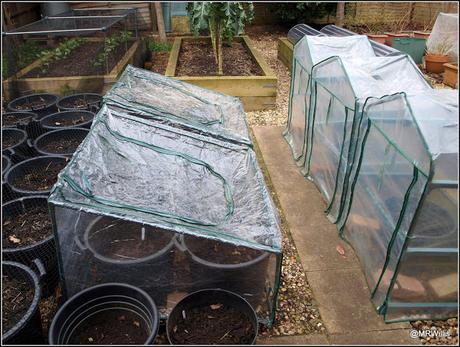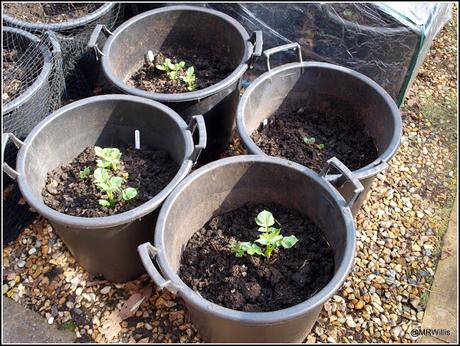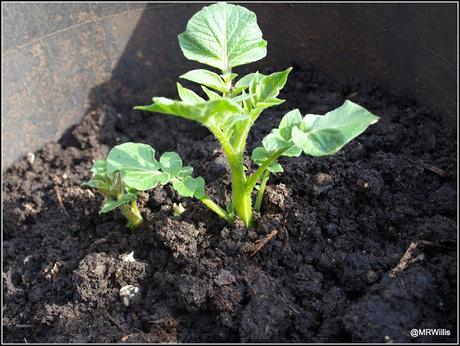
With the benefit of this protection, the potato plants grow much more rapidly than if they were in the open air.

First Earlies "Annabelle" and "Juliette", covers temporarily removed
A couple of days ago I judged that these first ones were ready for earthing-up (known in the USA and some other places as "hilling").
The stems of this vigorous "Annabelle" plant were already standing up a few inches above the soil surface, and it is this that makes earthing-up desirable.

Before earthing-up
The actual tubers (potatoes) that you harvest from a potato plant grow on things called "stolons", which come out from the base of the plant, underneath the surface of the soil. It makes sense to ensure that they have a good depth of soil in which to develop, and earthing-up has the effect of stretching the stems, which theoretically allows for the formation of more stolons. You could achieve this by planting the seed-tuber quite deeply, but if the emerging shoots have a long way to travel before reaching the light they may become weakened. Because of this, when growing potatoes in containers I usually earth-up in two stages, though this is not strictly necessary.
Here is the same plant, after another couple of inches of nice rich home-made compost have been added to the pot. The leaves are still exposed. but no stem is showing now.

After earthing-up
This pot has two "Annabelle" plants in it, and they are clearly ready for the treatment too.

Here they are afterwards, nearly buried again:

If like me you grow your potatoes under plastic or glass, don't forget to check them frequently to make sure their soil / compost is still moist. Potatoes hate dry soil, and if they don't get enough water they will inevitably produce a poor crop. Growing them in compost rather than soil helps with moisture-retention. The presence in the compost of plentiful organic matter also helps to prevent the tubers getting the disease called Scab.
